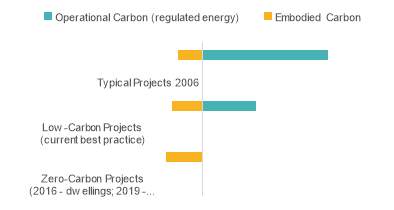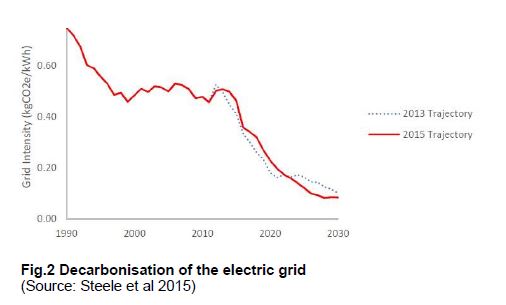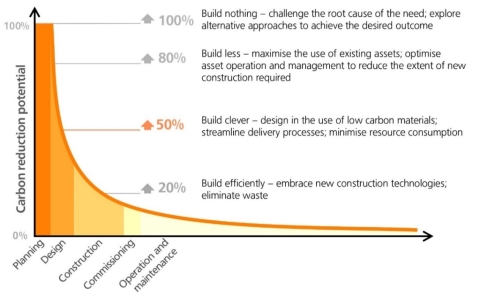Top Essay Writers
Our top essay writers are handpicked for their degree qualification, talent and freelance know-how. Each one brings deep expertise in their chosen subjects and a solid track record in academic writing.
Simply fill out the order form with your paper’s instructions in a few easy steps. This quick process ensures you’ll be matched with an expert writer who
Can meet your papers' specific grading rubric needs. Find the best write my essay assistance for your assignments- Affordable, plagiarism-free, and on time!
Posted: February 29th, 2024
USE OF NATURAL BUILDING MATERIALS TO REDUCE EMBODIED CARBON IN LOW-RISE OFFICE BUILDINGS IN THE UK
Students often ask, “Can you write my essay in APA or MLA?”—and the answer’s a big yes! Our writers are experts in every style imaginable: APA, MLA, Chicago, Harvard, you name it. Just tell us what you need, and we’ll deliver a perfectly formatted paper that matches your requirements, hassle-free.
Carbon Reduction from the built Environment (Importance and need, along with policies)
Over the last decades, there have been various evidences that show the climate is changing rapidly (Houghton JT et al., 2001) and the change will endure with time (Cabeza et al., 2014). Numerous researches associate human activities as the drivers of this current changing climate due to emissions of high amounts of greenhouse gases (GHG) into the atmosphere (IPCC 2017), this has become one of the major threats to our society. These GHG emissions are referred coherently as carbon emissions, which arises from the general practice of comparing the global warming potential of different GHG gases to that of carbon dioxide (CO2) using the measurement unit of carbon dioxide equivalent (CO2e). Among all the sectors, the building construction sector places the most pressure on the natural environment (Pomponi & Moncaster, 2016), while it provides for basic need of shelter requirement and infrastructure for civilisations, it also places various ecological threats. In the UK, it is responsible for about 40% of the total GHG emissions, further it also accounts for 45% of the final energy consumption, 50% of raw materials extraction and 32% of waste flows (Pomponi & Moncaster, 2016) (Chau, Leung, & Ng, 2015). Thus, inevitably the building sector becomes a key focus of efforts to tackle climate change and offer cost effective and significant improvements for sustainable environmental management (United Nations Environment Programme, 2009, p. 4). Various incentives have been taken in order to mitigate the effects of these emissions, crucial when the UK is bound to sustain its global commitment made in the Climate Change Act 2008 of reducing its target emissions to 80% by 2050 relative to the 1990 baseline (DECC, 2008).
As a result of this commitment, many legislative policies and building regulations on low carbon building have been introduced, which till date (as in Building Regulations Part L) mainly concentrate on reducing the operational carbon emissions of the buildings. As operational carbon account for 40% of all UK carbon emissions while building construction accounts for 10% (Carbon Trust 2009; HM Government 2010), this may be the primary reason embodied carbon emissions are neglected from the legislative attention (Michele Victoria, 2016). Due to these policies, the operational carbon is relatively reducing, leading to increase in significance of embodied carbon. Thus, to decrease overall carbon whilst complying with the 80% reduction goal, both operational and embodied carbon of buildings need to be significantly reduced (Richardson, 2017). Increase in energy efficient buildings may reduce emissions in the coming years but without focusing on the parallel reductions in embodied emissions, the present savings that could be currently made are being compromised, often instead leading to short term impact (Pomponi, De Wolf, & Moncaster, 2018).
Arguments on importance of EC have slowly added up over the past few years and have led to its gained momentum in the field. Apart from growing number researches on the importance of EC (fig if possible of number of studies coming each year on EC), industrial consultancies have developed tools for its assessments and product manufacturers have incorporated the effects of GWP on various EC stages of the product life (Pomponi et al., 2018). However, there is still a widespread disparity in the current methods and knowledge regarding EC, thus there is a vital need for a coherent body to form regulatory policies which can induce real change in forming decisions regarding construction of our built environment. Otherwise there is a risk of getting cocooned in a pool of detached ideas.
Absolutely, it’s 100% legal! Our service provides sample essays and papers to guide your own work—think of it as a study tool. Used responsibly, it’s a legit way to improve your skills, understand tough topics, and boost your grades, all while staying within academic rules.
Hence to form coherent ideas and policies, it has become exceedingly crucial to first understand emissions and impact assessments related to embodied carbon. EC assessment focuses on global warming potential of the products and excludes emissions associated with combustion of fossil fuels required for building use, known as operational carbon. The embodied carbon of any building is defined as the CO2e emissions associated with extraction, manufacturing, transport, installation, maintenance and replacement, and subsequent demolition and disposal of materials used in construction (Anderson & Thornback, 2012). These processes can be divided into 3 categories, processes from extraction to installation of materials are termed as Initial EC, Recurring EC, includes the maintenance and repair or replacement and Demolition EC associated with end of life of the materials (fig if possible)(Michele Victoria, Srinath Perera, 2016). Another phase of recycling of materials after demolition can be accounted for in EC assessment, however many projects exclude this phase.
Fig – (Michele Victoria, Srinath Perera, 2016)
Raw Material
Extraction
Transport
Yes, totally! We lock down your info with top-notch encryption—your school, friends, no one will know. Every paper’s custom-made to blend with your style, and we check it for originality, so it’s all yours, all discreet.
Recycle
Demolition
In-use
Manufacturing
No way—our papers are 100% human-crafted. Our writers are real pros with degrees, bringing creativity and expertise AI can’t match. Every piece is original, checked for plagiarism, and tailored to your needs by a skilled human, not a machine.
Construction




Not present in all projects
We’re the best because our writers are degree-holding experts—Bachelor’s to Ph.D.—who nail any topic. We obsess over quality, using tools to ensure perfection, and offer free revisions to guarantee you’re thrilled with the result, even on tight deadlines.
Growing Importance of EC in current scenario
Our writers are top-tier—university grads, many with Master’s degrees, who’ve passed tough tests to join us. They’re ready for any essay, working with you to hit your deadlines and grading standards with ease and professionalism.
The importance of embodied carbon along with operational carbon is evident and there is a growing understanding of the beneficial consequences of its reduction. Reasons attributed to its growing importance can be:

Figure: The ratio of embodied to operational carbon increases as Building Regulation are revised (RICS, 2012)

Always! We start from scratch—no copying, no AI—just pure, human-written work with solid research and citations. You can even get a plagiarism report to confirm it’s 95%+ unique, ready for worry-free submission.
Figure 5: Greenhouse Gas intensity of UK electricity, 2010-2050 (RICS Professional Information, UK, 2012)
Current state of building’s embodied carbon in non-commercial buildings
EC in buildings depend on the building typology and its use. As non-commercial buildings have high operational carbon (add fig or source), with grid decarbonisation the relative significance of their embodied carbon is bound to increase. The below figure shows assumed increase in fraction of EC of an office building after grid decarbonisation
Fig 1 shows proposed emission reductions by each sector in the UK. We see that by 2022, the carbon reductions in non-commercial buildings are supposed to drop significantly, for workplace and jobs sector it is assumed to be reduced till approximately 580 mtCO2e. The current emissions from offices are ————— . This means there is still much need for reductions in offices. For a typical new developed office, the current EC accounts for 40-50% of the total (Candau, 2016). This is a high fraction and there is a much need for improvement.
Figure 1: Proposed emission reductions per UK sector by 2025 (Adapted from DECC)
Influence of initial planning (materials) on building embodied carbon
Yep! Use our chat feature to tweak instructions or add details anytime—even after your writer’s started. They’ll adjust on the fly to keep your essay on point.
An emission reduction target route map was developed in 2013 (GCB, 2013) which manifested the way for future reductions, though recent updates show that the mitigation strategies adopted to date are insufficient to deliver these targets (Steele et al., 2015). This gap arises due to increased embodied carbon in new assets and will keep increasing if grid decarbonisation does not accelerate or if carbon storage strategies in new construction are not adopted and these technologies remain unviable to material manufacturers (Giesekam & Pomponi, 2017). Therefore, construction materials can play a vital role in future path of overcoming the gap between predicted and actual emission reductions. Early implementation of low carbon strategies in building designs, focusing on appropriate material selection for carbon storage, can prove to be highly beneficial.
or
Early implementation of low carbon strategies in building designs prove to be beneficial (Pomponi & Moncaster, 2016) . Like selection of appropriate materials which store carbon throughout the building life, can play a vital role in overcoming the gap between predicted and actual emission reductions targets.
There are various other informed decisions and strategies that can be undertaken during early stage design which can mitigate embodied emissions throughout building life (Lupíšek et al. 2016; Pomponi and Moncaster, 2016). Some of these corresponding to building materials can be:
Easy—place your order online, and your writer dives in. Check drafts or updates as you go, then download the final paper from your account. Pay only when you’re happy—simple and affordable!

Figure 2: Tackle Carbon early – more opportunities for reductions exist earlier in the construction process
RICS (2017) suggests, embodied carbon reduction potential is high during early design stages and continues to decrease as design develops. There is less room for flexibility and change and more carbon is committed in the project. This can be contradicted as many design variables at initial stages are temporary and only a few parameters are fixed, while assessment methods require high amount of very specific data to undergo complex calculations (Gerva´sio et al. 2014). Therefore it is a relatively new path (RICS, 2017) and there are limitations to current standards and researches, to aid in early decision making. This study discusses in detail one such early design decision of using biogenic building materials to reduce building embodied carbon.
(total words till here – 1550)
Super fast! Our writers can deliver a quality essay in 24 hours if you’re in a pinch. Pick your deadline—standard is 10 days, but we’ll hustle for rush jobs without skimping.
CHAPTER 2
Literature Review
2.1 What is Life Cycle Carbon?
Definitely! From astrophysics to literary theory, our advanced-degree writers thrive on tough topics. They’ll research deeply and deliver a clear, sharp paper that meets your level—high school to Ph.D.
LCA and Embodied carbon as its Component
Life cycle assessment is a standardized method of assessing the environmental impacts associated with the life stages of a building or a product. It quantifies the total carbon emitted by a building throughout its life (Pomponi et al., 2018). The different stages involved in LCA calculations are represented below in the (fig). As the need to reduce GHG gases from the atmosphere rises, the need to present quantified emissions from buildings or products also increase. Thus, LCA study is crucial to understand the overall performance of a building (Pomponi et al., 2018) and its environmental impact. The standalone numeric output values of its emissions are not so relevant by itself unless when comparisons are to be made and a better option is to be selected without any risks. Also, there still lies large amount of disparities in methods to calculate LCA, this can become a constraint for making comparisons.
LCA was studied extensively in the past to understand impact from all stages (Pomponi et al., 2018), though in general practice it is seldom that each and every stage is considered, and researchers or manufacturers tend to take into account only the stages which are the most relevant and are considered to make the most impact on whole life cycle.
Some of the useful terminologies to understand LCA are:
Embodied carbon assessments are a sub part of LCA assessments as shown in fig, although there can be differences in their methodological assessments as shown in table
Figure 2-1: How embodied carbon assessment fits into the wider scheme of LCA (Richardson, 2017)
Major difference between LCA and embodied carbon assessment:
| LCA Assessments | EC Assessments |
| Multiple impact categories assessed | Single impact category – GWP assessed |
| Includes all stages ( A-D) | Includes all (A-D) except operational use (B6, B7) |
| Rarely all categories are used for building emission assessment | GWP extensively used for building emission assessment |
| All categories specified for product/ material emissions | Rarely specified alone in product/ material emissions |
| Mostly used by PCR to form EPD’s | Used to calculate building’s embodied carbon |
Fig. 6.1 Relationships between ISO Standards, LCA, PCRs, and EPDs
Embodied carbon assessment methods
There are three primary methods known for LCA and subsequently embodied carbon assessment:
• Process based analysis (SETAC-EPA approach)
• Environmentally extended input-output analysis (EEIO)
• Hybrid analysis (combination of process analysis and EEIO)
| Process based Analysis | EEIO | Hybrid Analysis |
| Focuses on environmental impact from individual stages of product | Studies macro – economic data for assessing impact of a product | Combination of both process and EEIO techniques |
| Focuses on product system and product boundaries needs to be defined (Richardson, 2017) | Focuses on larger monetary and sectoral exchanges of national/regional economy (Richardson, 2017) | Assesses entire supply chain of a product |
| All input- output between product and environment calculated | Economic output from a sector is calculated as a result of inputs from all other sectors, thus all |
You Want The Best Grades and That’s What We Deliver
Our top essay writers are handpicked for their degree qualification, talent and freelance know-how. Each one brings deep expertise in their chosen subjects and a solid track record in academic writing.
We offer the lowest possible pricing for each research paper while still providing the best writers;no compromise on quality. Our costs are fair and reasonable to college students compared to other custom writing services.
You’ll never get a paper from us with plagiarism or that robotic AI feel. We carefully research, write, cite and check every final draft before sending it your way.